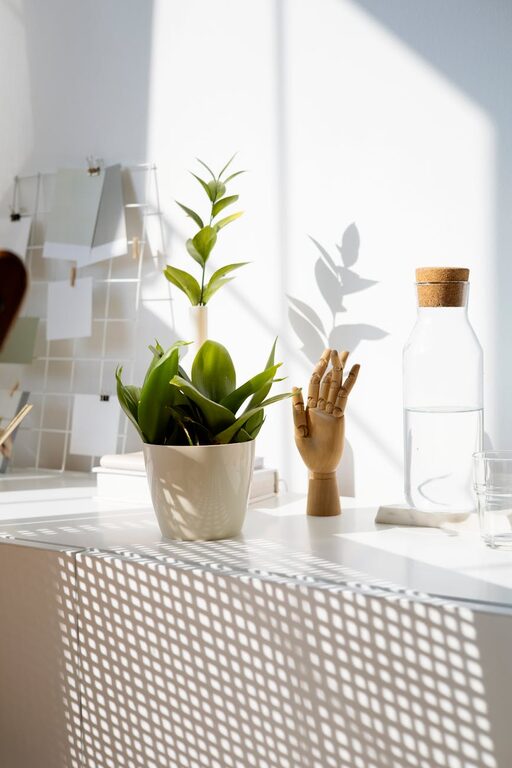
Essential Tips for Keeping Your Houseplants Healthy and Thriving
Keeping houseplants healthy is a rewarding and enjoyable hobby that brings life and color into your home. Whether you are new to indoor gardening or have several plants already, understanding the basics of plant care can ensure your green friends thrive for years to come. In this post, we’ll explore practical tips on how to maintain healthy houseplants, covering light, watering, soil, and more.
Choose the Right Plant for Your Space
Before diving into care routines, selecting the appropriate houseplant for your environment is crucial.
– Assess light conditions: Some plants need bright, indirect light (e.g., fiddle leaf fig, succulents), while others thrive in low light (e.g., snake plant, pothos).
– Consider humidity and temperature: Tropical plants prefer more humidity, so they do well in kitchens or bathrooms.
– Size and growth habits: Think about how big your plant might grow and whether you have room for it.
Matching the plant’s natural needs to your home environment sets the foundation for a healthy plant.
Understanding the Importance of Proper Lighting
Light is essential for photosynthesis, the process plants use to produce energy.
Types of Light
– Direct sunlight: Intense light shining directly on the plant for several hours.
– Indirect sunlight: Bright light filtered through curtains or reflected off surfaces.
– Low light: Minimal natural light, such as rooms with north-facing windows.
Most houseplants prefer bright, indirect sunlight. Too much direct sun can scorch leaves, while too little light may cause slow growth and leaf drop.
Tips for Managing Light
– Rotate your plants regularly to ensure all sides receive equal light.
– Use sheer curtains to diffuse harsh sunlight.
– Consider supplemental lighting like grow lights during darker months.
Watering: Finding the Right Balance
Overwatering or underwatering are common reasons houseplants become unhealthy.
How to Water Properly
– Check soil moisture: Insert your finger about an inch into the soil. If it feels dry, it’s time to water.
– Use room temperature water: Cold water can shock roots.
– Water evenly: Pour water slowly until it drains from the bottom, ensuring all roots get hydrated.
Common Mistakes
– Watering on a strict schedule regardless of soil dryness.
– Using pots without drainage holes, leading to waterlogged soil.
– Letting plants sit in standing water, causing root rot.
Adjust watering frequency based on the plant type, season, and indoor climate.
Choosing the Right Soil and Fertilizer
Healthy soil supports strong root systems and overall plant health.
Soil Types
– Use well-draining potting mix designed for indoor plants.
– Succulents and cacti need sandy or gritty soil that drains quickly.
– Avoid garden soil as it may contain pests or minerals harmful to potted plants.
Fertilizing Tips
– Feed plants during active growing seasons (spring and summer) with a balanced, water-soluble fertilizer.
– Follow package instructions carefully; over-fertilizing can burn roots.
– Some plants require specific fertilizers, so research your plant’s needs.
Maintaining Humidity and Temperature
Indoor environments can be dry, especially during winter.
How to Increase Humidity
– Group plants together to create a microclimate.
– Place a tray of water near plants or use a humidifier.
– Mist plants occasionally but avoid overdoing it to prevent mold.
Ideal Temperature Range
Most houseplants prefer temperatures between 65–75°F (18–24°C). Avoid placing plants near heating vents, air conditioners, or drafts.
Pruning and Cleaning
Regular grooming encourages healthy growth and keeps plants looking their best.
Pruning Tips
– Remove dead or yellowing leaves to prevent disease.
– Pinch back leggy growth to encourage bushier plants.
– Use clean, sharp scissors or pruning shears.
Cleaning Leaves
Dust can block sunlight and reduce photosynthesis.
– Wipe leaves gently with a damp cloth.
– For plants with many small leaves, give them a gentle shower in the sink.
Repotting Your Plants
When plants outgrow their containers or soil quality declines, repotting is necessary.
Signs You Need to Repot
– Roots growing out of drainage holes.
– Soil drying out very quickly after watering.
– Plant becomes top-heavy or looks crowded.
Repotting Tips
– Choose a pot one size larger with drainage holes.
– Gently remove the plant and loosen roots if root-bound.
– Refresh soil and water well after repotting.
Watch for Pests and Diseases
Healthy plants are less susceptible, but pests can still be a problem.
Common Indoor Plant Pests
– Spider mites
– Aphids
– Mealybugs
– Scale insects
Preventive Measures and Treatments
– Inspect plants regularly.
– Wipe leaves or spray with mild soapy water.
– Isolate new plants for a few weeks to prevent spreading pests.
Final Thoughts
Keeping houseplants healthy is about observing and responding to your plants’ needs. With the right light, watering habits, soil, and a little attention to humidity, pruning, and pest control, your houseplants will flourish and bring joy to your home. Remember, every plant is unique, so take time to learn about your specific varieties and enjoy the process!
Happy planting!
